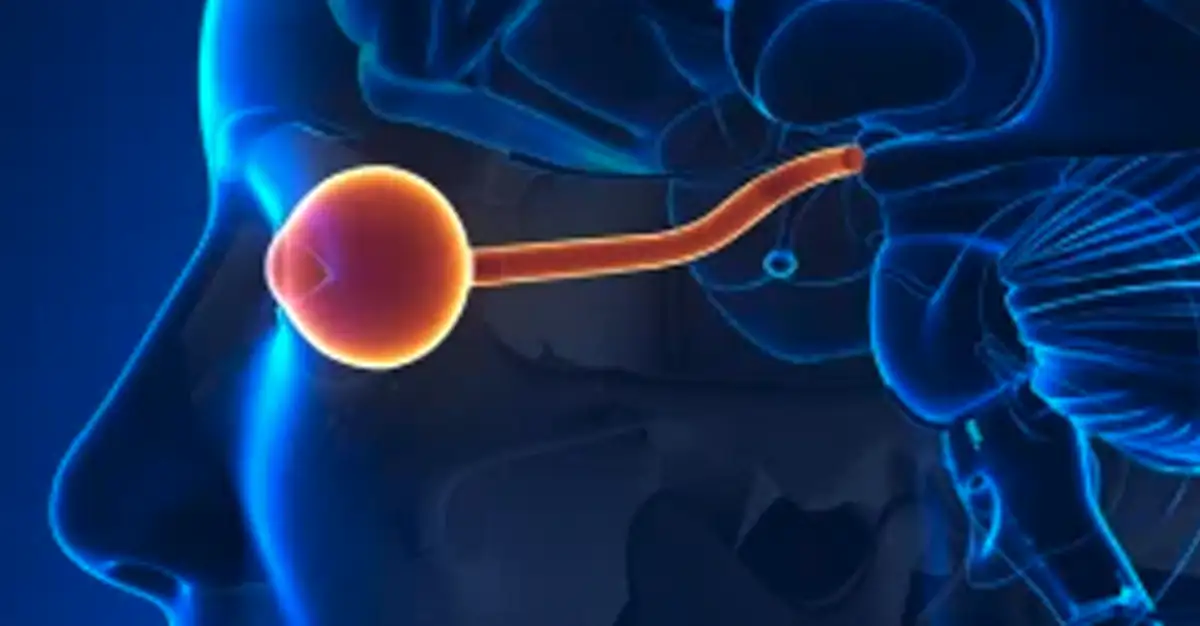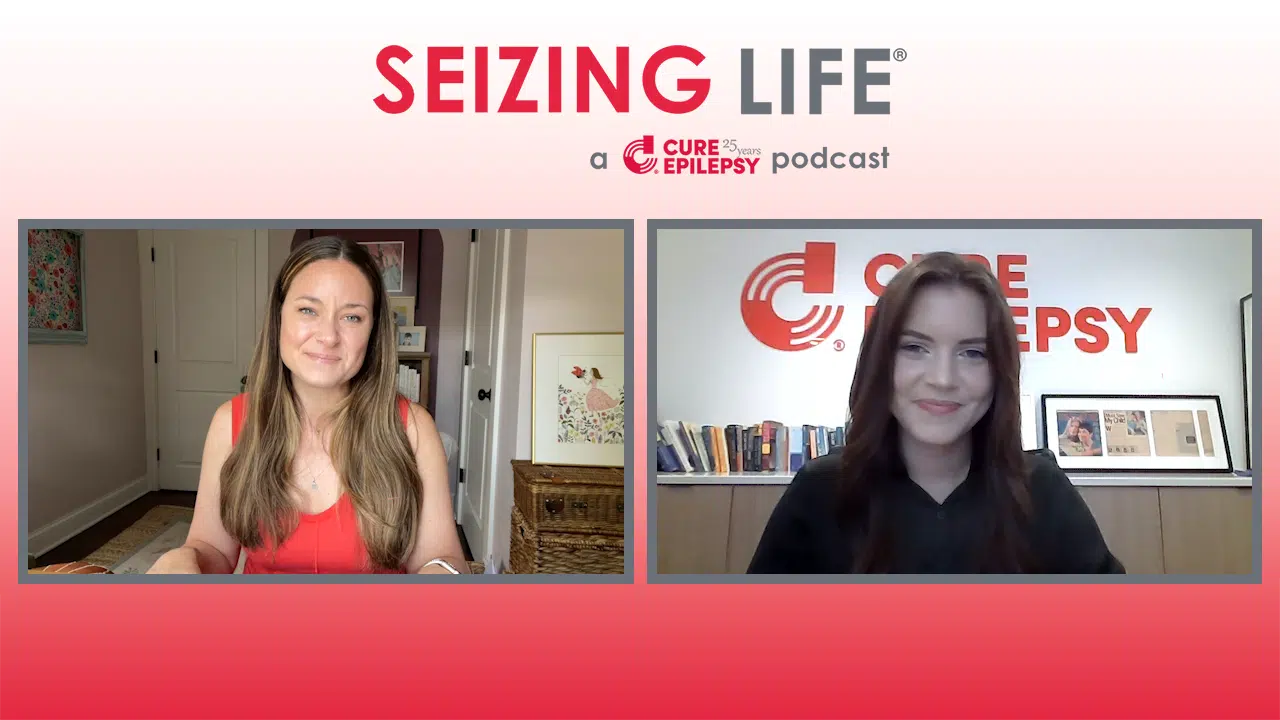What is Epilepsy with Eyelid Myoclonia (Jeavons Syndrome)?
Epilepsy with eyelid myoclonia (EEM), also known as Jeavons syndrome, accounts for approximately 1.2-2.7% of people seen at some epilepsy centers, although more research is needed. It is a generalized epilepsy syndrome with onset usually occurring between 1 to 15 years of age, with peak onset between 6 to 8 years of age. Children typically present with prominent eyelid myoclonia, which is a jerking or flickering up of the eyelids associated with the eyes rolling up, typically occurring many times in a single day. Eyelid myoclonia may be associated with absence seizures in children and eye closure sensitivity. Other seizure types may be present in people with EEM as well. Females are affected more than males at a 2:1 ratio.
What Causes EEM / Jeavons Syndrome?
A positive family history of epilepsy in many patients as well as cases in twins points to a genetic cause; however, many people with EEM do not have a genetic diagnosis. Recently, underlying genetic variants have been identified in a minority of people with EEM, including mutations in the following genes: RORB, SYNGAP1, KCNB1, NAA10, COL6A3, NEXMIF, and CHD2. Further research is needed to clarify the role of genetics in EEM, as it may influence the evolution and prognosis of the disorder as well as the search for a cure.
Diagnosis of EEM / Jeavons Syndrome
A thorough clinical history, neurological exam, and an EEG usually precede a diagnosis. If eyelid myoclonia is witnessed during a neurological exam by the diagnosing provider and other features of the diagnosis are seen on EEG, an EEG capturing eyelid myoclonia or other seizures is not required. An MRI of the brain is also not required for diagnosis, but when done is typically normal or shows changes unrelated to epilepsy.
EEM or Jeavons syndrome is a type of absence epilepsy diagnosed by the presence of the following elements:
1) Eyelid myoclonia
- Defined as a jerking, flickering or fluttering of the eyelids usually associated with upward deviation of the eye and can be associated with a tendency for the head to jerk backward.
- Required but not sufficient for an EEM diagnosis, as other epilepsies may involve eyelid myoclonia as well.
- May occur with or without visible absence seizures (loss of awareness).
2) Eye closure-induced or bright and/or flickering light-induced seizures or EEG paroxysms
- An abnormal EEG is required for diagnosis, but the absence of one does not rule out EEM, as the telltale EEG signature may not be present during all episodes.
3) Sensitivity to light
- Photosensitivity will be present at some point in life, but can go away with aging or medication use. Photosensitivity may happen in daily life and sometimes it can be captured on an EEG.
Other seizure types that may be present include:
- Generalized tonic-clonic seizures are seen in the majority of people with EEM but are usually infrequent. With these seizures, people lose control and have jerking movements of all of their extremities.
- Myoclonic seizures, which are brief jerks of the extremities.
Other reported triggers in addition to sunlight and going from darkness to light include: concentration (e.g., storytelling, recalling information, etc.), eating, lack of sleep, screen time, menstrual cycle, stress, blood sugar instability, excitement, and illness.
Treatments and Therapies for EEM / Jeavons Syndrome
Per the expert consensus process recently convened by CURE Epilepsy, there was a strong consensus for valproic acid as the first-line treatment for Jeavons syndrome, with levetiracetam or lamotrigine as preferable alternatives for women of childbearing age. There was a moderate consensus that ethosuximide and clobazam are also efficacious. Modern antiseizure medications like lacosamide, brivaracetam, and perampanel are also options, but more experience and research is needed. There was a strong consensus to avoid sodium channel-blocking medications, except for lamotrigine, as they may worsen seizure control. The response to different antiseizure medications can vary between patients, and trials of multiple medications may be necessary. In addition, all antiseizure medications have possible side effects that may limit their use and should be discussed with your doctor.
There is less agreement about other areas of management, including dietary therapy, blue lens therapy, and implications for driving.
- Dietary therapy: People with EEM may try diets such as the ketogenic diet, Modified Atkins diet, and low glycemic index diet. These diets are high in fat and low in carbohydrates; they require a significant amount of commitment. Individuals typically work closely with their doctor and a nutritionist for dietary therapies. Monitoring may required and side effects can be seen.
- Lens therapy: For people with Jeavons syndrome with significant photosensitivity, sometimes lens therapy can be effective at reducing seizures. Special lenses (like Ziess glasses) have been studied but are not readily available worldwide. In addition, these lenses significantly reduce light intake, and therefore, may not be well tolerated.
- Less is known about more advanced treatments for epilepsy for EEM specifically, such as a vagus nerve stimulator and responsive neurostimulation.
Related Disorders / Commons Misdiagnoses
There is often a long delay between onset of eyelid myoclonia and recognition of it as a seizure type. Sometimes eyelid myoclonia is mistaken as an eye-blinking tic or behavioral reaction (e.g., an eye roll or “sass”); therefore, children may be taken initially to a psychologist or psychiatrist.
Sunflower syndrome was classified in 2022 as a subgroup of EEM termed “EEM with prominent photic induction” by the International League Against Epilepsy (ILAE). Individuals with Sunflower syndrome show sun-seeking behavior with hand waving in front of the eyes, which may trigger seizures, and often these patients have developmental delay. However, the relationship between EEM and Sunflower syndrome is not well-characterized and more research is needed.
Jeavons syndrome is similar to several other generalized epilepsy syndromes, which may be considered by the diagnosing doctor. Childhood absence epilepsy (CAE) is a generalized epilepsy with average onset around the same age as EEM. People with CAE typically have multiple absence seizures a day, which can be associated with eye fluttering but is not as pronounced as the eyelid myoclonia seen in EEM. CAE resolves in childhood for most people, unlike Jeavons syndrome, though there are rare reports of CAE turning into EEM.
There can also be overlap between EEM and juvenile myoclonic epilepsy (JME). The age of onset for JME is typically older, between 10-24 years. Myoclonic jerks, usually of the arms and legs, are a prominent seizure type in addition to generalized tonic-clonic seizures. Absence seizures may also be present.
Depending on clinical features, other epilepsy syndromes may be considered in the differential diagnosis including photosensitive occipital lobe epilepsy, epilepsy with myoclonic absences, Dravet syndrome, and Lennox-Gastaut syndrome.
Prognosis / Outlook
Intellectual ability in people with Jeavons syndrome is typically normal, but eyelid myoclonia may interfere with schoolwork and attention. Anxiety and depression may also be present, as these are common conditions seen in patients with epilepsy. Per CURE Epilepsy’s recent expert consensus process, seizures typically persist for life (with remission occurring in fewer than 50% of patients) and drug-resistant epilepsy is common.









